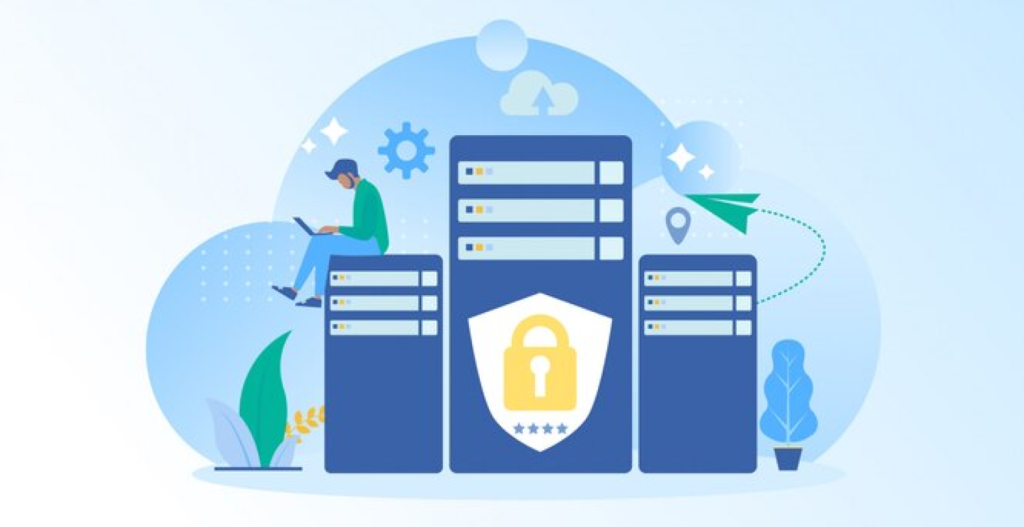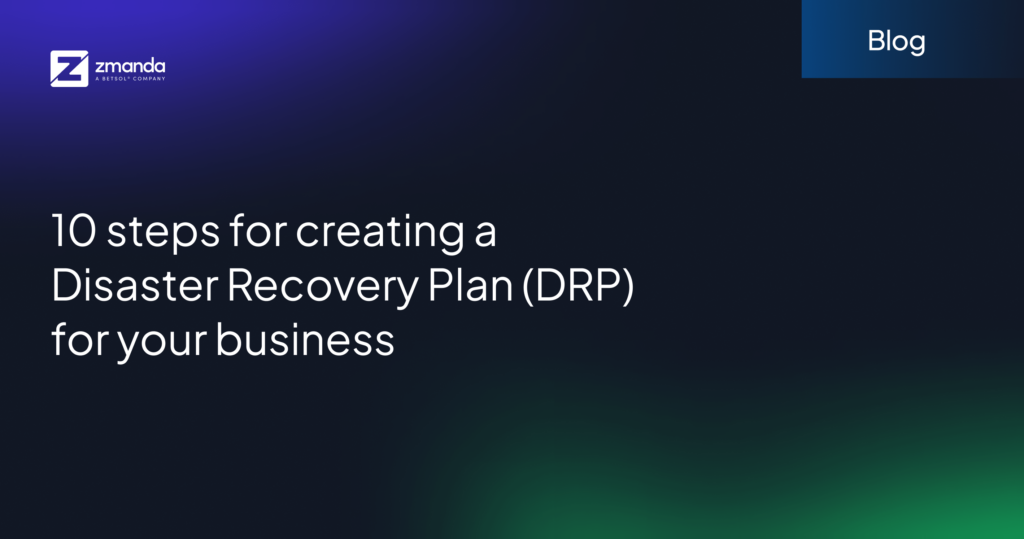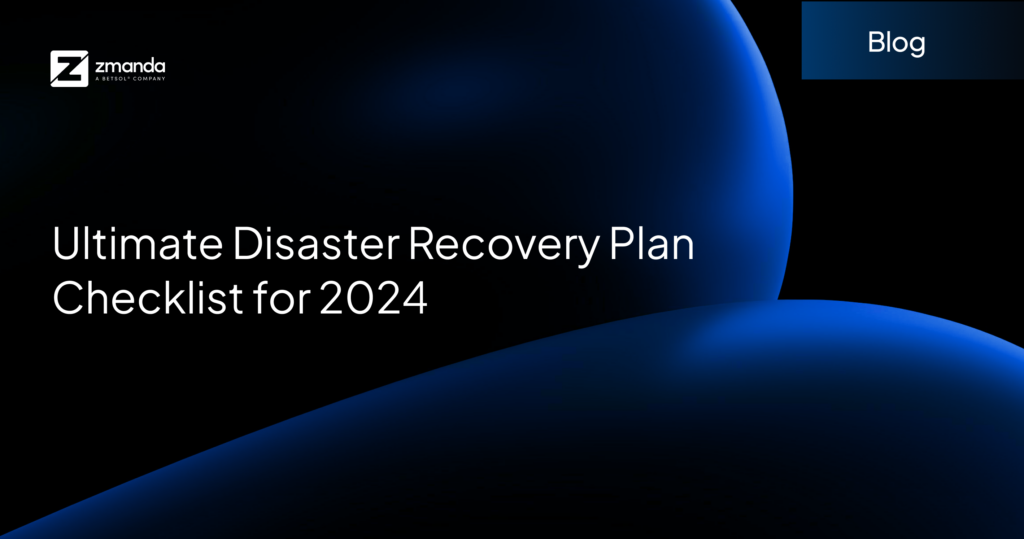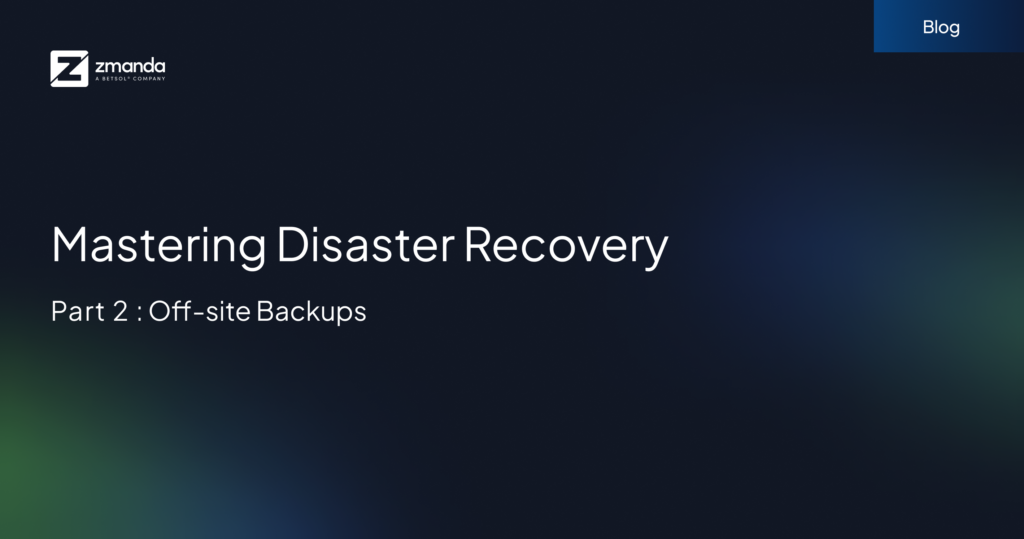
Did you know that 32% of the total ransomware victims pay the ransom, despite this, they get just 65% of their data back according to a 福布斯研究. The protection of digital assets is more crucial now than ever before. You can lose your data due to several reasons, from cyber-attacks to natural disasters.
Therefore, you need to protect your business with a well-tested disaster recovery plan that keeps your bottom line stable no matter what. Fortunately, moving data to the cloud instead of keeping it on-prem, has made something as complex as disaster recovery quite effortless. Cloud disaster recovery is something businesses can use to host their data on the internet. In addition, it is an alternative to local storage elements, as it offers excellent data integrity.
什么是云容灾?
云容灾 is an approach to restoring lost vital business data by leveraging cloud backup resources. It allows for high availability and uninterrupted process flows. 灾难恢复 曾经是一个昂贵的提议,需要维护它的所有硬件、软件和员工。 但是,云灾难恢复凭借其可扩展性消除了这个问题。 此外,您现在可以按使用量付费来实施灾难恢复解决方案。 简而言之,您不需要花费比满足您的要求所需的更多的钱。

为什么需要云灾难恢复?
No matter how small or large, data loss can turn into a severe problem for businesses nowadays. The time within which the business operations return to normal is also crucial. With so much riding on data security, having a robust 灾难恢复计划 is non-negotiable. Out of the many approaches to disaster recovery, cloud DR offers a considerable advantage in terms of cost and uninterrupted access to data. It even allows you to secure your data with low overhead and costs. In addition, cloud disaster recovery will enable you to restore your critical data shortly. This matters a lot when a disaster strikes because the longer your business downtime is, the more money you lose. Any business, be it small or medium-sized, can bounce back from any security threats and natural disasters in no time with the help of a cloud recovery solution.
What are the Benefits of Cloud Disaster Recovery?
- 使用方便: Disaster recovery (DR) solutions can be tested and adopted in no time with minimal effort. When disaster strikes, you don’t experience downtime but considerable pressure to restart operations for business continuity. An easy-to-use DR solution will help you in such scenarios.
- 可扩展性和敏捷性: 您可以根据需要增加或减少数据存储容量。
- 改进的数据保护: With disaster recovery in cloud solutions, you can recover and protect your data with top-notch security practices and encryption.

4. 立即实施: 使用设置和配置向导快速部署
5. 走向云,走向绿色: Less energy consumption, reduced power costs, and, no need for large server rooms.
比较云灾难恢复与传统灾难恢复
| 云灾难恢复 | 传统灾难恢复 |
| 在云基础架构上运行成本低 | 基础设施投资和维护成本高 |
| 网站可以在几秒钟或几分钟内恢复 | 该网站可以在几分钟或几小时内恢复 |
| 由于数据存储在云媒体上,因此具有高耐用性 | 随着物理介质随时间退化,耐久性降低 |
| 可恢复性模式的更大灵活性 | 由于成本高且不可行,可恢复模式的灵活性有限 |
The takeaway? Cloud Disaster Recovery (Cloud DR) offers lower costs, rapid site restoration in seconds or minutes, and high durability through cloud-based data storage. Its flexibility allows for various recoverability patterns. In contrast, 传统灾难恢复 involves higher costs, slower restoration times in minutes or hours, and lower durability due to physical media degradation, with limited flexibility. The choice depends on organizational priorities, budget, and recovery objectives, emphasizing the need for a tailored approach to ensure business continuity.
Exploring Cloud Disaster Recovery Strategies
Various strategies in cloud disaster recovery (DR) are employed to safeguard data and ensure business continuity. Here, we delve into three primary approaches:
- Cold DR: This method involves storing data or virtual machine (VM) images in a remote location. While it’s the simplest and least expensive option, recovery from a disaster is typically slower, requiring additional steps such as downloading data or loading VM images.
- Warm DR: A standby approach where duplicate data and applications reside with a cloud DR provider, regularly updated to mirror the primary data center. Although faster to recover than cold DR, there’s still some downtime as resources need to be activated and traffic redirected to the DR site.
- Hot DR: This advanced approach maintains live, synchronized deployments of data and workloads across multiple sites. Both the primary data center and the DR site actively handle workload traffic, ensuring seamless continuity. While offering zero downtime, hot DR is the most complex and costly option.
Organizations can tailor their approach by prioritizing critical workloads for hot DR while employing warm or cold DR for less critical ones. It’s crucial to assess each workload’s needs and select a cloud DR provider capable of supporting the chosen strategies effectively.
Selecting Cloud Disaster Recovery Options
Data centers offer businesses different options for data protection. In cloud-based disaster recovery(DR) strategies, managed applications are popular components. They store both primary production data and backup cases in the cloud that a provider manages. Thus companies need not depend on on-premises backups. Instead, they can reap the benefits of the cloud in a usage-based model.
A hosted or managed recovery solution brings you a comprehensive cloud-based platform with the required hardware and software to support your operations. If you choose this option data and applications remain on-premises with only data backed up on the cloud infrastructure and restored as needed. This solution can be a cost-effective option compared to other traditional options such as 异地备份 and local data backup.
However, the process to recover applications may be slow. Many vendors offer cloud backup services, but it is recommended that businesses check with their respective vendors if this is an option to make the implementation as easy as possible. The next viable option is to back up and restore data from the cloud infrastructure.
In simpler words, data is stored on virtual machines in the cloud instead of on-premises servers, necessitating cloud storage and cloud computing services. When a disaster strikes, the restore process can be executed, or it can be recurring. Recurring backups are crucial when the recovery goals are short. It ensures data is kept up to date through resource sharing.
复制到云中的虚拟机是一种针对目标较短的应用程序和数据的可行DRaaS(灾难恢复即服务)。 复制到云意味着确保在云和本地中保护数据和应用程序。
云灾难恢复解决方案入门
Once you have decided on the type of disaster recovery in the cloud solution you want, the next step is to look for options available with different cloud disaster recovery services. There are quite a few options in the market, such as VMware Cloud disaster recovery, Google Cloud disaster recovery, and Oracle Cloud disaster recovery. Many vendors offer different pricing packages, which may include a certain number of users, application backup, data backup, and frequency of backup.
Cloud Disaster Recovery Solutions with Zmanda
Zmanda Pro’s Cloud Disaster Recovery Solutions epitomize resilience in the face of uncertainty. Seamlessly harmonizing with top-tier cloud providers, Zmanda offers a suite of backup and recovery solutions meticulously designed to safeguard businesses from the unexpected. Whether it’s ensuring swift recovery, preserving data integrity, or seamlessly adhering to compliance protocols, Zmanda equips organizations with the confidence to navigate turbulent times. Explore how Zmanda can fortify your disaster recovery strategy discreetly yet effectively.
另外,请务必签出 罗格斯案例研究:大学如何节省了数万美元


